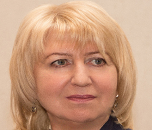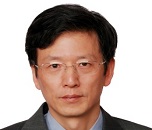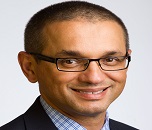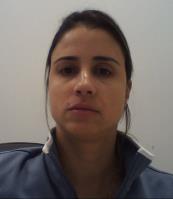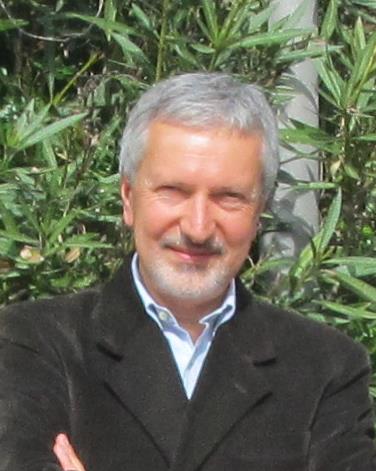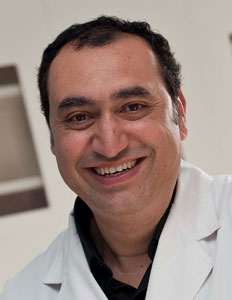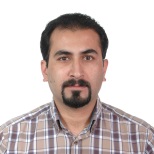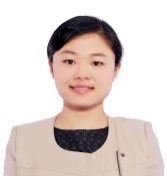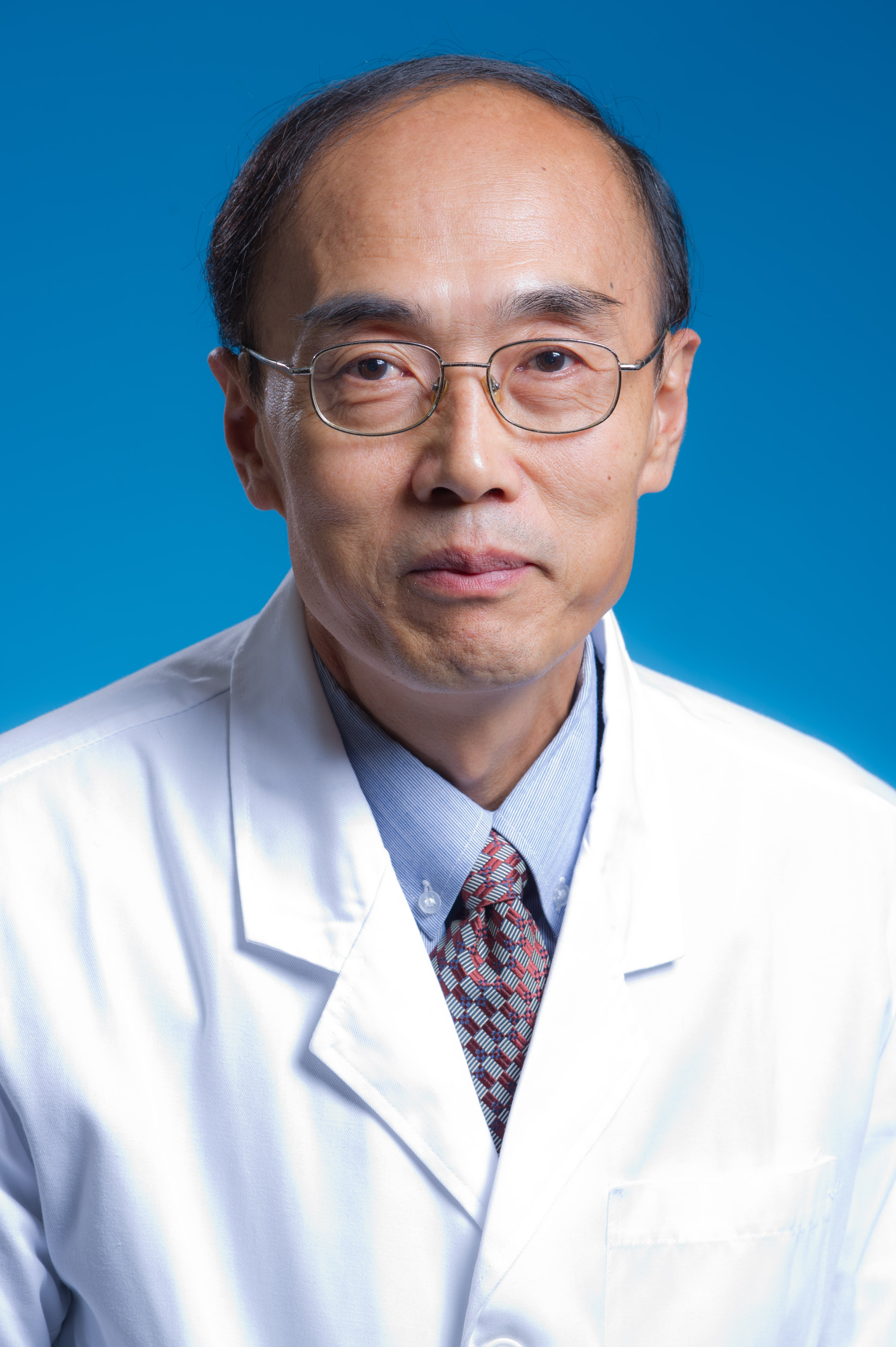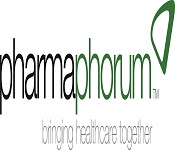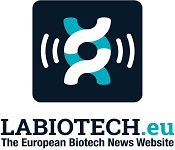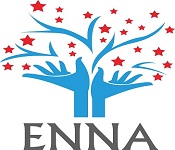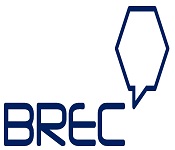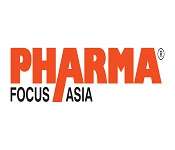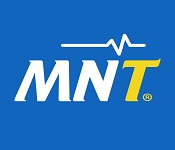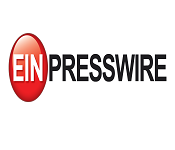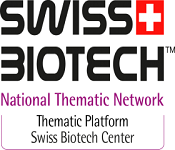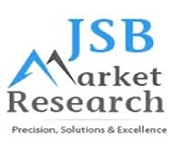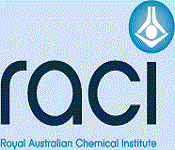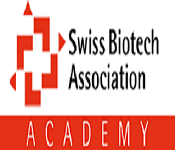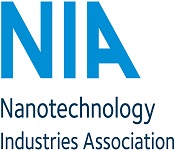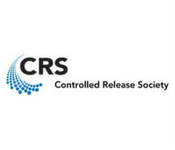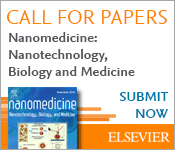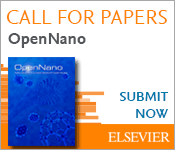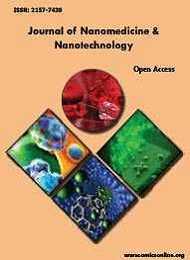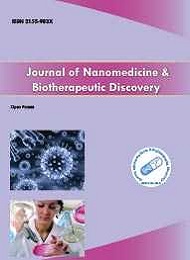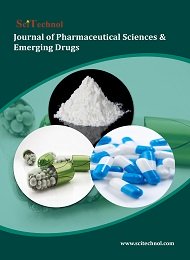Theme: Nanomedicine: Shaping the future of next generation medicine
NanoMed 2017
ConferenceSeries Ltd is a renowned organization that organizes highly notable conferences throughout the globe. Currently we are bringing forth “13th International Conference and Exhibition on Nanomedicine and Pharmaceutical Nanotechnology” (NanoMed 2017) scheduled to be held during July 24-25, 2017 at Rome, Italy. The conference invites all the participants across the globe to attend and share their insights and convey recent developments in the field of Pharmaceutical Nanotechnology and Clinical Trials.
The main theme of the conference is “Emerging Importance of Nanotechnology to Drive the Pharma Industry”.
ConferenceSeries Ltd organizes a conference series of 1000+ Global Events inclusive of 1000+ Conferences, 500+ Upcoming and Previous Symposiums and Workshops in USA, Europe & Asia with support from 1000 more scientific societies and publishes 700+ Open access Journals which contains over 50000 eminent personalities, reputed scientists as editorial board members.
Track-1: Nanomedicines and Biomedical Applications
Nanomedicine seeks to deliver a valuable set of research tools and clinically useful devices. The pharmaceutical industry is developing new commercial applications that may include advanced drug delivery systems, new therapies, and Nanomaterials for Imaging and Drug Delivery. Another active and very much related area of research is the investigation of toxicity and environmental impact of nanoscale materials, since nanomedicines must be biocompatible for clinical application.
Nanomaterials Conference, March 30-31, 2017, Madrid, Spain; Medical Nanotechnology Summit May 22-23, 2017, Osaka, International Conference on Nanomedicine and Drug Delivery, May 29-31, 2017 Osaka, Japan; 2nd International Conference on Nanomedicine, Drug Delivery, and Tissue Engineering, April 05-06, 2017, Barcelona, Spain; 19th International Conference on Nanotechnology and Nanomedicine, July 9 - 10, 2017, Prague, Czech Republic; European Nanomedicine Meeting 2017, April 3-4, 2017, London, UK; 19th International Conference on Nanotechnology and Nanomedicine, June 21 - 22, 2017, Vienna, Austria; 4th World Congress and Expo on Nanotechnology and Materials Science, April 05-07, 2017, Barcelona, Spain. Nano Canadian Society, American Nano Society, American Society for Nanomedicine, Society for Personalized Nanomedicine, Royal Society-NanoTechnology and NanoScience.
Track-2: Pharmaceutical Nanotechnology
Nanotechnology is the science which deals with the processes that occur at molecular level and of nanolength scale size. The major studies in the nanotechnology include nanosized particles, their function and behaviour with respect to other systems. The tremendous capabilities of nanoparticles have changed the perspective and scope of nanotechnology towards development into an adjuvant field for the remaining fields of life sciences. Nanotechnology is the ability to understand and control materials at the very smallest scales, from around 100 nm to the dimensions of single atoms; At this Nano scale the properties of these nanosized particles are vary from the conventional medicines.
Related Conferences:
International Conference on Nanomedicine and Drug Delivery, May 29-31, 2017, Osaka, Japan; 15th World Medical Nanotechnology Congress & Expo, May 22-23, 2017, Frankfurt, Germany; International Conference on Nanotechnology 2017, August 7-8, 2017, Beijing, China; 16th World Nano Conference, June 5-6, 2017, Milan, Italy; 20th International Conference and Expo on Nanoscience and Molecular Nanotechnology, Dec 19-20, 2017, Osaka, Japan; 2nd International Conference on Nanomedicine, Drug Delivery, and Tissue Engineering, April 05-06, 2017, Barcelona, Spain; 15th World Medical Nanotechnology Congress & Expo, May 22-23, 2017, Osaka, Japan; 14th Global Experts Meeting on Nanomaterials and Nanotechnology, Mar 30-31, 2017, Madrid, Spain; 8th International Conference on Nanotechnology: Fundamentals and Applications (ICNFA'17), Jun 07-08, 2017, Rome, Italy; 2nd International Conference on Nanobiotechnology (ICNB'17), April 5 - 6, 2017, Barcelona, Spain; Nano Canadian Society, American Nano Society, American Society for Nanomedicine, Society for Personalized Nanomedicine, Royal Society-NanoTechnology and NanoScience.
Track-3: Nanomedicine and Drug Delivery
Pharmaceutical Nanotechnology deals with emerging new technologies for developing customized solutions for drug delivery systems. The drug delivery system positively impacts the pharmacokinetics of the drug or other related chemical entities in the body. In addition to this the drug delivery system also allows the drug to bind to its target receptor and influence that receptor signaling and activity. Pharmaceutical nanotechnology is helpful in the field of pharmacy as nanomaterials, and as devices like drug delivery, diagnostic, imaging and biosensor.
Related Conferences:
International Conference on Nanomedicine and Drug Delivery, May 29-31, 2017, Osaka, Japan; 11th World Drug Delivery Summit, October 16-18, 2017 New York, USA; 10th International Conference on Pharmaceutics & Novel Drug Delivery Systems, March 13-15, 2017, London, UK; 16th World Nano Conference, June 5-6, 2017, Milan, Italy; 15th World Medical Nanotechnology Congress & Expo, May 22-23, 2017, Frankfurt, Germany; 8th Global Drug Delivery Formulation & Expo, March 2017, Berlin, Germany; 2nd International Conference on Nanomedicine, Drug Delivery, and Tissue Engineering, April 05-06, 2017, Barcelona, Spain; 15th World Medical Nanotechnology Congress & Expo, May 22-23, 2017, Osaka, Japan; 14th Global Experts Meeting on Nanomaterials and Nanotechnology, Mar 30-31, 2017, Madrid, Spain; 8th International Conference on Nanotechnology: Fundamentals and Applications (ICNFA'17), Jun 07-08, 2017, Rome, Italy; Nanotechnology and Nanoscience Student Association (NANSA), Canadian NanoBusiness Alliance, European NanoBusiness Association, International Association of NanoTechnology (IAN), British Society for Nanomedicine.
Track-4: Nano Pharmaceuticals
Nanopharmaceuticals represent an emerging field where the sizes of the drug particle or a therapeutic delivery system work at the nanoscale. Nanopharmaceuticals offer the ability to detect diseases at much earlier stages and the diagnostic applications could build upon conventional procedures using nanoparticles. Nanopharmaceuticals represent an emerging field where the sizes of the drug particle or a therapeutic delivery system work at the nanoscale. In the pharmaceutical industry, a long standing issue is the difficulty of delivering the appropriate dose of a particular active agent to specific disease site. Nanopharmaceuticals have enormous potential in addressing this failure of traditional therapeutics which offers site-specific targeting of active agents. Such precision targeting via nanopharmaceuticals reduces toxic systemic side effects, resulting in better patient compliance.
Nanomaterials Conference, March 30-31, 2017, Madrid, Spain; Medical Nanotechnology Summit May 22-23, 2017, Osaka, International Conference on Nanomedicine and Drug Delivery, May 29-31, 2017 Osaka, Japan; 2nd International Conference on Nanomedicine, Drug Delivery, and Tissue Engineering, April 05-06, 2017, Barcelona, Spain; 19th International Conference on Nanotechnology and Nanomedicine, July 9 - 10, 2017, Prague, Czech Republic; European Nanomedicine Meeting 2017, April 3-4, 2017, London, UK; 19th International Conference on Nanotechnology and Nanomedicine, June 21 - 22, 2017, Vienna, Austria; 4th World Congress and Expo on Nanotechnology and Materials Science, April 05-07, 2017, Barcelona, Spain. Congress on Innovation in Drug Delivery (APGI), Controlled Release Society (CRS), American Academy of Nanomedicine (AANM), Nanotechnology and Nanoscience Student Association (NANSA), Canadian NanoBusiness Alliance.
Track-5: Novel Drug Delivery Technology
Novel approaches of drug delivery systems helps to enhance the availability of the drug, safety, efficacy and patient compliance. These Novel systems enable the administration of drugs in various routes and help in improving bioavailability of the drug either by changing its course of action, pharmacokinetic parameters or by the releasing patterns at the site of action. Drug delivery has now become a versatile scientific field by involving the studies of both biopharmaceutics and pharmacokinetics. These novel systems are to provide novel strategies for the delivery of biologically active drug molecules to the targeted sites at the right dose and at the right time.
Related Conferences:
10th International Conference on Pharmaceutics & Novel Drug Delivery Systems, March 13-15, 2017, London, UK; 11th World Drug Delivery Summit, October 16-18, 2017 New York, USA; International Conference and Exhibition on Nanomedicine and Drug Delivery, May 29-31, 2017, Osaka, Japan; World Congress on Controlled Release Formulations / World Congress on Sustained Release Formulations, June 12-14, 2017 Amsterdam, Netherlands; 2nd Drug Formulation & Bioavailability Congress, May 8-10, 2017, Berlin, Germany; 7th Annual American Drug Delivery and Formulation Summit 2017, Costa Mesa, USA; 2nd European Conference on Pharmaceutics Novel dosage forms & innovative technologies, April 3-4, 2017, Krakow, Poland; World congress on Pharmaceutics & Drug Delivery Systems, June 29-July 01, Valencia, Spain; 2nd International Conference on Bridging Innovations in Pharmaceutical, Medical and Bio Sciences, Feburary11 - 12 , 2017, Bhopal, India; SLAS2017, the Society’s flagship international Conference and Exhibition, February 4-8, 2017, Washington. DC, USA; International Association of Nanotechnology (IANT), American Association for the Advancement of Science, Congress on Innovation in Drug Delivery (APGI), Controlled Release Society (CRS), American Academy of Nanomedicine (AANM).
Track-6: Nanotechnology for Targeted Drug Delivery
Nano drug delivery systems can be used to tune and regulate release pharmacokinetics, pharmacodynamics, solubility, immunocompatibility, cellular uptake, biodistribution and by reducing toxicity these will enhances therapeutic index of traditional pharmaceuticals. They can be used to deliver both small-molecular and macromolecular drugs. These nanoparticles mediated sustained release of drugs offer an advantage that the targeted delivery of drugs in the body is required to prevent the release of therapeutics at non-specific sites and unwanted side-effects. The conjugation of targeting moieties with drug-loaded nanoparticles can be used for receptor-mediated and targeted delivery. Such targeted nanoparticles have the characteristics of a perfect drug delivery system that tends to improve the therapeutic activity while reducing the toxic side effects of drugs.
Related Conferences:
International Conference on Nanomedicine and Drug Delivery, May 29-31, 2017, Osaka, Japan; 11th World Drug Delivery Summit, October 16-18, 2017 New York, USA; 10th International Conference on Pharmaceutics & Novel Drug Delivery Systems, March 13-15, 2017, London, UK; 20th International Conference and Expo on Nanoscience and Molecular Nanotechnology, Dec 19-20, 2017, Osaka, Japan; International Conference on Nanobiotechnology, July 10-11, 2017, Chicago, USA; Nanotechnology 2017, Aug 07- 08, 2017, Beijing, China; NFA 2017 — The 3rd International Conference on Nanomaterials: Fundamentals and Applications, Oct 09-11, 2017, Slovakia, Europe; SLAS2017, the Society’s flagship international Conference and Exhibition, February 4-8, 2017, Washington. DC, USA; RDD Europe 2017, April 25-28, 2017, Nice (Antibes), France; 13th International Conference on Diffusion in Solids and Liquids - DSL2017, June 26-30, 2017, Vienna, Austria; American Association for the Advancement of Science, Congress on Innovation in Drug Delivery (APGI), Controlled Release Society (CRS), American Academy of Nanomedicine (AANM), Nanotechnology and Nanoscience Student Association (NANSA).
Track-7: Nanotechnology for Paediatric Medicine
Nanotechnology is widely used for development of paediatric medicine based on its variable characteristics. The large surface to volume ratio characteristic of nanomaterials is helpful to inhibit bacteria attachment to the organs and promote nonbacterial cell adhesion. The unique surface energetics of nanomaterials because of their significantly greater surface area compared with micron-sized materials. Because of the tissue growing properties of nanomaterials and antimicrobial properties of both nanoparticles and Nano modified surfaces have a number of applications within paediatric medicine. Some of these applications include anti-infection, tissue regeneration, drug delivery, and bio-sensing.
Related Conferences:
International Conference on Nanomedicine and Drug Delivery, May 29-31, 2017, Osaka, Japan; 2nd International Conference on Pediatric Oncology, August 28-30, 2017, Philadelphia, USA; 12th Annual Pediatric Medicine Congress, August 28-30, 2017, Philadelphia, USA; 11th International Conference on Clinical Pediatrics, June 29-July 1, 2017, London, UK; International Conference on Nanotechnology 2017, August 7-8, 2017, Beijing, China; World Summit on Pediatrics 2017, June 22-25, 2017, Rome, Italy; World Congress on Micro and Nano Manufacturing 2017, March 27-30, 2017, Kaohsiung, Taiwan; 13th International Conference on Diffusion in Solids and Liquids - DSL2017, June 26-30, 2017, Vienna, Austria; International Nanomedicine Conference, July 03-05, 2017, Sydney, Australia; 2nd International Conference on Nanomedicine, Drug Delivery, and Tissue Engineering, April 05-06, 2017, Barcelona, Spain; Korea Nano Technology Research Society, Nano Science and Technology Consortium (NSTC), Nanotechnology Industries Association (NIA), Royal Society - Nanotechnology and Nanoscience, Russian Society of Scanning Probe Microscopy and Nanotechnologies.
Track-8: Nanotechnology in Preclinical and Clinical Development
Nanotechnology is generating a major influence on preclinical and clinical drug development. Novel combination of existing clinical treatments can instantaneously detect and kill only cancer cells without harming surrounding organs. Advancements in nanobiotechnology have led to the design of nanoparticle based new drug candidates that present a novel approach to medical diagnostics and therapeutics. The biocompatible designing of Nano devices used for drug delivery has increased the solubility and effectiveness of classical drugs, and has provided the technology required for the targeted delivery of encapsulated tissue-organ specific therapeutics.
Related Conferences:
3rd International Conference on Advanced Clinical Research and Clinical Trials, June 19-20, 2017, London, UK; International Conference on Nanotechnology 2017, August 7-8, 2017 Beijing, China; International Conference on Nanomedicine and Drug Delivery, May 29-31, 2017, Osaka, Japan; 20th International Conference and Expo on Nanoscience and Molecular Nanotechnology, Dec 19-20, 2017, Osaka, Japan; International Conference on Nanobiotechnology, July 10-11, 2017, Chicago, USA; World Preclinical Congress 2017, June 13-15, 2017, Boston USA; ICTO2017 — International Congress on Clinical Trials in Oncology and Hemato-Oncology, Mar 16- 17, 2017, London, UK; Clinical Trial Supply Europe 2017, March 15-16, 2017, Barcelona, Spain; Clinical Trial Collaborations, April 3-4, 2017, Boston, USA; ACRP 2017 Meeting & Expo, April 29-May 2, 2017, Seattle, USA; American Nano Society, American Society for Nanomedicine, Society for Personalized Nanomedicine, Royal Society-NanoTechnology and NanoScience, International Association of Nanotechnology (IANT).
Track-9: Regulatory Guidance for Pharmaceutical Nanotechnology
Nanotechnology represents a platform for developing revolutionary changes and improvements to many different aspects of pharmaceutical manufacturing. Also, the rate of nanotechnology discovery is proceeding more rapidly than practical applications can be found. Nanotechnology offers potential in pharmaceuticals for improving drug delivery systems, medical imaging, diagnosis, cancer therapy, and regenerative medicine. Although there is no international regulation or legislation specifically for nanomedicine, it is agreed worldwide that considerably more attention should be paid to the quality, safety, and efficacy of nanotechnology-based drugs. The US FDA and the European Medicines Agency have provided several regulatory guidelines for the development of nanomedicines.
Related Conferences:
World Congress on Regulations of Nanotechnology, July 11-12, 2017, Chicago, USA; 7th International Conference on Pharmaceutical Regulatory Affairs and IPR, Sep 25-26, 2017, Chicago, USA; 10th Nanotechnology Conference, Sep 10-11, 2017, London, UK; 16th World Nano Conference, June 5-6, 2017, Milan, Italy; International Conference on Nanobiotechnology, July 10-11, 2017, Chicago, USA; 2nd International Conference on Nanomaterials, Nanodevices, Fabrication and Characterization (ICNNFC'17), April 5 - 6, 2017, Barcelona, Spain; 8th International Conference on Advanced Materials and Nanotechnology, February 12-16, 2017, Queenstown, New Zealand; 2nd International Conference on Nanotechnology and Material Science, July 27-28, 2017, Suzhou, China; International Nanomedicine Conference, July 03-05, 2017, Sydney, Australia; 3rd International Congress On Technology - Engineering & Science, February 09 -10, 2017, Malaysia; Canadian NanoBusiness Alliance, European NanoBusiness Association, International Association of NanoTechnology (IAN), British Society for Nanomedicine, Czech Nanotechnology Industries Association.
Track-10: Future Aspects of Pharmaceutical Nanotechnology
Nanotechnology helps us economically to build a wide range of complex molecular devices by manipulating the structures on an atomic and molecular scale. Nanotechnology may be able to synthesize many new materials and devices with at least one dimension sized from 1 to 100 nm with a wide range of applications in pharmaceuticals. Future aspects of Nanotechnology in pharmaceuticals involve applications of nanoparticles, development of nano-robotics for cellular level repairing and also to develop Nano generators and Nano pore sequencing.
Related Conferences:
19th Nanotek Conference November 13-14, 2017, Chicago, USA; 15th World Medical Nanotechnology Congress & Expo, May 22-23, 2017 Osaka, Japan; 20th International Conference on Nanoscience & Molecular Nanotechnology, Dec 19-20, 2017, Osaka, Japan; World Congress on Regulations of Nanotechnology July 11-12, 2017, Chicago, USA; International Conference on Nanobiotechnology, July 10-11, 2017, Chicago, USA;; The Eleventh International Conference on Quantum, Nano/Bio, and Micro Technologies, September 10 - 14, 2017, Rome, Italy; 3rd International Conference on Nanomaterials, Fundamentals and Applications (NFA 2017), 09 - 11 October 2017, Slovakia, Europe; NanoWorld Conference, April 03-05, 2017, Boston USA; 4th World Congress and Expo on Nanotechnology and Materials Science, April 05-07, 2017, Barcelona, Spain; Erwin Schrödinger Society for Nanosciences, European Society for Precision Engineering and Nanotechnology (EUSPEN), International Association of Nanotechnology, Korea Nano Technology Research Society, Nano Science and Technology Consortium (NSTC).
Track-11: Recent Advances in Nanotechnology
Nano materials and devices play a major role in the field of pharmaceutical nanotechnology. Nanomaterials exhibit properties remarkably different from the properties of the bulk material due to the large surface area to volume ratio that increases the solubility and rate of absorption. Novel nanostructures will helpful for use as artificial tissue engineering and also help to integrate nanodevices with the nervous system that will restore vision and hearing, and build artificial limbs through the implant of new tissue. Nanotechnology is applied in the pharmaceutical industry in such areas as nanomedicine, tissue engineering, nanorobotics, biosensors, biomarkers, image enhancement devices and implant technology. Investigations are currently being carried out on, among others, liposomes, dendrimers, metallic nanoparticles, polymeric nanoparticles, CNTs, quantum dots and nanofibres.
Related Conferences:
International Conference on Nanobiotechnology, July 10-11, 2017, Chicago, USA; 17th Nanotechnology Products and Expo, Sep 17-18, 2017, Seoul, South Korea; 7th International Conference on Pharmaceutical Regulatory Affairs and IPR, Sep 25-26, 2017, Chicago, USA; 10th Nanotechnology Conference, Sep 10-11, 2017, London, UK; 16th World Nano Conference, June 5-6, 2017, Milan, Italy; 4th World Congress and Expo on Nanotechnology and Materials Science, April 05-07, 2017, Barcelona, Spain; 5th International Conference on Nano and Materials Engineering (ICNME 2017), April 01-03, 2017, Bali, Indonesia; International Nanomedicine Conference, July 03-05, 2017, Sydney, Australia; Nanotech 2017 Conference & Expo, May 14-17, 2017, Washington DC, USA; 13th International Conference on Diffusion in Solids and Liquids - DSL2017, June 26-30, 2017, Vienna, Austria; Nanotechnology Industries Association (NIA), Royal Society - Nanotechnology and Nanoscience, Russian Society of Scanning Probe Microscopy and Nanotechnologies, Nano Canadian Society, American Nano Society.
Track-12: Major Challenges in Nanotechnology
At present, nanotechnology has been widely applied to the area of drug development. Nanoparticle-based therapeutics has the ability to overcome biological barriers and to deliver hydrophobic drugs and biologics effectively to the target sites of disease. The complexity of nanoparticles as multi-component 3D structures require careful design and engineering and reproducible scale-up and manufacturing process to achieve a consistent product. The safety and efficacy of nanoparticle-based medicines can be influenced by minor variations in multiple parameters and need to be carefully examined in preclinical and clinical examinations. Finally, nanoparticle-based medicines may have to represent additional development challenges and regulatory considerations compared with conventional medicines. Efforts are being made to produce unique category of therapeutic agents while there is generally a lack of regulatory standards in the examination of nanoparticle-based medicines.
Related Conferences:
World Congress on Regulations of Nanotechnology, July 11-12, 2017, Chicago, USA; 7th International Conference on Pharmaceutical Regulatory Affairs and IPR, Sep 25-26, 2017, Chicago, USA; 10th Nanotechnology Conference, Sep 10-11, 2017 London, UK; 16th World Nano Conference, June 5-6, 2017, Milan, Italy; International Conference on Nanobiotechnology, July 10-11, 2017, Chicago, USA; Nano World Conference, April 03-05, 2017, Boston, USA; 13th International Conference on Diffusion in Solids and Liquids - DSL2017, June 26-30, 2017, Vienna, Austria; The Eleventh International Conference on Quantum, Nano/Bio, and Micro Technologies, September 10 - 14, 2017 - Rome, Italy; 15th World Medical Nanotechnology Congress & Expo, May 22-23, 2017, Osaka, Japan; 14th Global Experts Meeting on Nanomaterials and Nanotechnology, Mar 30-31, 2017, Madrid, Spain; American Society for Nanomedicine, Society for Personalized Nanomedicine, Royal Society-NanoTechnology and NanoScience, International Association of Nanotechnology (IANT), American Association for the Advancement of Science.
Track-13: Pharmaceutical Companies and Markets
Nano-enabled medical products have made their impact on the following areas such as cancer, CNS diseases, cardiovascular disease, and infection control. Among these cancer is one of the largest therapeutic area in which nano-enabled products have made their major contributions. Cancer is a prime focus for nano pharmaceutical R&D, and companies with clinical-stage developments. The nanomedicine market is in early growth. While nano-enhanced drug delivery products are already a commercial reality, more advanced nanotech-based medical devices are still in development, although some are at the clinical testing stage. Most of the money being spent on the wider field of nanotechnology R&D comes from government and established corporations. In the nanomedicine field, pharmaceutical and specialist companies are at the forefront of research into the medical applications of nanotechnology.
Related Conferences:
International Conference on Nanomedicine and Drug Delivery, May 29-31, 2017, Osaka, Japan; 15th World Medical Nanotechnology Congress & Expo, May 22-23, 2017, Frankfurt, Germany; International Conference on Nanotechnology 2017, August 7-8, 2017 Beijing, China; 16th World Nano Conference, June 5-6, 2017, Milan, Italy; 20th International Conference and Expo on Nanoscience and Molecular Nanotechnology, Dec 19-20, 2017, Osaka, Japan; International Nanotechnology Exhibition & Conference, February 15-17, 2017, Tokyo, Japan; International Conference on Nanosciences & Nanotechnologies (NN17), July 4-7, 2017, Thessaloniki, Greece; 7th NANOTEXNOLOGY Expo 2017, July 03-07, 2017, Thessaloniki, Greece; 5th International Conference on Nano and Materials Science ICNMS 2017, January 19-21, 2017, San Diego, USA; 15th World Medical Nanotechnology Congress & Expo, May 22-23, 2017, Osaka, Japan; Congress on Innovation in Drug Delivery (APGI), Controlled Release Society (CRS), American Academy of Nanomedicine (AANM), Nanotechnology and Nanoscience Student Association (NANSA), Canadian NanoBusiness Alliance.
Track-14: Business Opportunities in Nanotechnology
In 2008 more than $18 billion was invested in nanotechnology R&D by private and public sector companies worldwide with substantial portions in the areas of health and medicine. Upon ageing of population and increasing costs of healthcare, the focus is shifting from managing health to preventative measures. Hence better diagnostic Nano devices and targeted therapeutics with smart drug delivery devices will be in higher demand. Advancements in Nanotechnology will not only improve efficacy and reduce side effects of existing drugs but also will enable a faster discovery process to eliminate non-efficacious drugs with less investment and in a little time. Similarly, these advancements in nanotechnologies will shorten the drug development process and get more drugs to market quicker.
Related Conferences:
World Congress on Regulations of Nanotechnology, July 11-12, 2017, Chicago, USA; 7th International Conference on Pharmaceutical Regulatory Affairs and IPR, Sep 25-26, 2017, Chicago, USA; 10th Nanotechnology Conference, Sep 10-11, 2017 London, UK; 16th World Nano Conference, June 5-6, 2017, Milan, Italy; International Conference on Nanobiotechnology, July 10-11, 2017, Chicago, USA; 4th World Congress and Expo on Nanotechnology and Materials Science, April 05-07, 2017, Barcelona, Spain; 5th International Conference on Nano and Materials Engineering (ICNME 2017), April 01-03, 2017, Bali, Indonesia; International Nanomedicine Conference, July 03-05, 2017, Sydney, Australia; Nanotech 2017 Conference & Expo, May 14-17, 2017, Washington DC, USA; 13th International Conference on Diffusion in Solids and Liquids - DSL2017, June 26-30, 2017, Vienna, Austria; European NanoBusiness Association, International Association of NanoTechnology (IAN), British Society for Nanomedicine, Czech Nanotechnology Industries Association, Erwin Schrödinger Society for Nanosciences.
ConferenceSeries Ltd is a renowned organization that organizes highly notable international conferences throughout the globe. Currently we are bringing forth “13th International Conference and Exhibition on Nanomedicine and Pharmaceutical Nanotechnology” (NanoMed 2017) scheduled to be held during July 24-25, 2017 at Rome, Italy. The conference invites all the participants across the globe to attend and share their insights and convey recent developments in the field of Pharmaceutical Nanotechnology and Drug delivery.
The main theme of the conference is “Emerging Importance of Nanotechnology to Drive the Pharma Industry”.
NanoMed 2017 is a unique platform to meet fellow key decision makers and experts all-around the Academic Institutions, Healthcare Institutes, Pharmaceutical, Biotech, Biomedical, Formulation scientists and researchers making the congress a perfect platform to share experience, foster collaborations through the research talks & presentations to put forward many thought provoking strategies. It's a perfect stage to brainstorm, discover new ideas, search for new skills and a platform to show your capabilities and discoveries to the world.
ConferenceSeries Ltd organizes a conference series of 3000+ Global Events with over 1000+ Conferences, 1200+ Symposiums and 1200+ Workshops in USA, Europe & Asia with support from 1000 more scientific societies and publishes 700+ Open access journals which contains over 30000 eminent personalities, reputed scientists as editorial board members.
Top Reasons to Attend
- A unique opportunity to discuss issues of importance and relevance to advancing pharmacy practice through continuous professional development.
- The conference is of interest to all those in the Continuing Education/Professional Development experience, including pharmacists, developers, sponsors, faculty, regulators, government, professional associations, pharmaceutical industry, communication companies, and allied health care providers and organizations from around the world.
- Meet with key decision makers in the pharmaceutical industry worldwide and learn about the latest innovations, technologies, trends and developments in pharmaceutical industry.
- Network and gain access to one of the world's fastest growing pharmaceutical markets.
- A momentum is growing world-wide that recognizes the integral role of continuing professional development in Pharmaceutical Industry, and the value of sharing experiences and knowledge in an international, collegial forum.
- The conference facilitates participant access to high quality educational programs, internationally significant research and development, and world-renowned leaders in the Pharmaceutical field.
- This is the only event featuring renowned speakers and delegates and expertise on the topics you care about most!
Target Audience
- Professors, Associate Professors, Asst Professors
- PhD Scholars
- Graduates and Post Graduates
- Directors, CEO’s of Organizations
- Association, Association presidents and professionals
- Noble laureates in Health Care and Medicine
- Bio instruments Professionals
- Research Institutes and members
- Supply Chain companies
- Manufacturing Companies
- Training Institutes
- Business Entrepreneurs
2017 Highlights:
- 300+ Participation (70 Industry: 30 Academia)
- 5+ Keynote Speakers
- 50+ Plenary Speakers
- 20+ Exhibitors
- 14 Innovative Educational Sessions
- 5+ Workshops
- B2B Meetings
Summary:
Nanotechnology will have a broad and fundamental impact on many sectors of the U.S. economy; various technical, marketing and other hurdles need to be overcome before nanotechnology fulfills this promise. These challenges and differences of opinion regarding commercial applications are reflected in the widely diverging estimates of the U.S. and global nanotechnology markets.
According to BCC Research, the global market for nanoparticles in the life sciences is estimated at over $29.6 billion for 2014. This market is forecast to grow to more than $79.8 billion by 2019, to register a healthy compound annual growth rate (CAGR) of 22%. The biggest increase will come in the area of drug delivery systems.
As products complete clinical trials and gain US FDA market approval, the revenues from these products will grow at 23%. Basic biotechnology research revenues will increase due to the quest to find more nanoparticle applications, as more drugs become successfully delivered by these carrier systems. Drug development and formulation will show steady sustained growth at 20.7%. Nanoparticles for use in diagnostic imaging will continue to show healthy growth at 20.1%. This will result from the need to develop more definitive nanoparticle markets for disease diagnosis. To date, drug delivery has been the main near-term opportunity for medical nanotechnology. This market has an estimated value of $15.8 billion for 2014 and is forecast to grow to $44.5 billion by 2019, to register a significant CAGR of 23%. The drug development category, the second fastest-growing opportunity, was projected at nearly $12.6 billion for 2014 and is expected to increase to $32.2 billion by 2019 at a 20.7% CAGR.
Nanotechnology applications are defined comprehensively as the creation and utilization of materials, devices, and systems through the manipulation of matter at scales of less than 100 nanometers. Nanotechnology covers nanomaterials (nanoparticles, nanotubes, nanostructured materials, and nanocomposites), nanotools (nanolithography tools and scanning probe microscopes), and nanodevices (nanosensors and nanoelectronics).
Scope and Importance:
Nanotechnology is the science which deals with the processes that occur at molecular level and of nanolength scale size. The major studies in the nanotechnology include nanosized particles, their function and behavior with respect to other systems. The tremendous capabilities of nanoparticles have changed the perspective and scope of nanotechnology towards development into an adjuvant field for the remaining fields of life sciences. Pharmaceutical Nanotechnology deals with emerging new technologies for developing customized solutions for drug delivery systems. The drug delivery system positively impacts the pharmacokinetics of the drug or other related chemical entities in the body. In addition to this the drug delivery system also allows the drug to bind to its target receptor and influence that receptor signaling and activity. Pharmaceutical nanotechnology is helpful in the field of pharmacy as nanomaterials, and as devices like drug delivery, diagnostic, imaging and biosensor.
Why Rome, Italy???
Rome has the status of a global city. Rome ranked in 2014 as the 14th most visited city in the world, 3rd most visited in the European Union, and the most popular tourist attraction in Italy. Its historic center is listed by UNESCO as a World Heritage Site. Monuments and museums such as the Vatican Museums and the Colosseum are among the world's most visited tourist destinations with both locations receiving millions of tourists a year. Rome hosted the 1960 Summer Olympics and is the seat of United Nations' Food and Agriculture Organization (FAO).
Rome is a major EU and international financial, cultural and a business centre. With a 2005 GDP of €94.376 billion (US$121.5 billion), the city produces 6.7% of the national GDP (more than any other single city in Italy), and its unemployment rate, lowered from 11.1% to 6.5% between 2001 and 2005, is now one of the lowest rates of all the European Union capital cities. Rome grows +4.4% annually and continues to grow at a higher rate in comparison to any other city in the rest of the country. This means that were Rome a country, it would be the world's 52nd richest country by GDP, near to the size to that of Egypt. Rome also had a 2003 GDP per capita of €29,153 (US$ 37,412), which was second in Italy, (after Milan), and is more than 134.1% of the EU average GDP per capita. Also, Rome hosts the head offices of the vast majority of the major Italian companies and corporations, as well as the headquarters of 3 of the world's 100 largest companies: Enel, Eni, and Telecom Italia.
Scientific Sessions:
- Pharmaceutical Nanotechnology
- Novel Drug Delivery Technology
- Nanomedicine and Drug Delivery
- Nanotechnology for Pediatric Medicine
- Nanotechnology in Preclinical and Clinical Development
- Nanotechnology for Targeted Drug Delivery
- Regulatory Guidance for Pharmaceutical Nanotechnology
- Future Aspects of Pharmaceutical Nanotechnology
- Recent Advances in Nanotechnology
- Major Challenges in Nanotechnology
- Pharmaceutical Companies and Markets
- Business Opportunities in Nanotechnology
Members Associated with Nanotechnology Research:
- Pharmaceutical Nanotechnology Industries
- Food Nanotechnology research institutes
- Nano scale device Manufacturing Companies
- Pharmaceutical Faculty
- Pharmaceutical Nanotechnology Associations and Societies
- Pharmaceutical Researchers
- Pharmaceutical students
- Nanotechnology Scientists
- Nanotech Business Entrepreneurs
- Consultancies offering nanotechnology courses
- Nanotechnology marketing executives
Major Nanotechnology Associations & Societies:
Associations around Rome:
- The British Society for Nanomedicine
- Italian Association for Industrial Research
- NanoItaly Association
Associations & Societies around Italy:
- ISEKI Food Association (IFA)
- Italian Association for Industrial Research
- Italian Center for Nanotechnology
- Nanotechnology Industries Association
- The CIVEN association of Veneto universities
- Veneto Nanotech
Associations & Societies around the Globe:
- New England Nanotechnology Association (NENA)
- Asian Nanoscience and Nanotechnology Association
- International Association of Nanotechnology
- American Society for Testing and Materials (ASTM International).
- Nanoscale Science Research Centers (NSRCs)
- Australian Research Council Nanotechnology Network (ARCNN)
- Global Nanotechnology Network (GNN)
- Materials Research Society
- International Union of Materials Research societies
- Major Nanotechnology Associations around the Europe
- German Association of Nanotechnology
- Brazilian Nanotechnology National Laboratory
- International Council on Nanotechnology (ICON)
- Nano Science and Technology Institute (NSTI)
- Nano Canadian Society
- American Nano Society
- American Society for Nanomedicine
- Society for Personalized Nanomedicine
- Royal Society-NanoTechnology and NanoScience
- International Association of Nanotechnology (IANT)
- American Association for the Advancement of Science
- Congress on Innovation in Drug Delivery (APGI)
- Controlled Release Society (CRS)
- American Academy of Nanomedicine (AANM)
- Nanotechnology and Nanoscience Student Association (NANSA)
- Canadian NanoBusiness Alliance
- European NanoBusiness Association
- International Association of NanoTechnology (IAN)
- British Society for Nanomedicine
- Czech Nanotechnology Industries Association
- Erwin Schrödinger Society for Nanosciences
- European Society for Precision Engineering and Nanotechnology (EUSPEN)
- Korea Nano Technology Research Society
- Nano Science and Technology Consortium (NSTC)
- Nanotechnology Industries Association (NIA)
- Royal Society - Nanotechnology and Nanoscience
- Russian Society of Scanning Probe Microscopy and Nanotechnologies
Statistics:

Major Pharmaceutical Universities:
Universities in Rome:
- Sapienza University of Rome
- University of Rome Tor Vergata
- Roma Tre University
Universities in Italy:
- Magna Græcia University
- Sapienza University of Rome
- University of Bari
- University of Bologna
- University of Cagliari
- University of Camerino
- University of Catania
- University of Chieti-Pescara
- University of Ferrara
- University of Florence
- University of Genoa
- University of Messina
- University of Milan
- University of Modena and Reggio Emilia
- University of Naples Federico II
- University of Padua
- University of Palermo
- University of Parma
- University of Pavia
- University of Perugia
- University of Pisa
- University of Salerno
- University of Sassari
- University of Siena
- University of Trieste
- University of Turin
- University of Urbino
Major Universities around globe:
- University of North Carolina
- University of Minnesota
- University of California
- University of Michigan
- University of Texas
- Ohio State University
- University of Illinois
- University of Kentucky
- Purdue University
- University of Florida
- University of Maryland
- University of Pittsburgh
- University of Southern California
- University of Washington
- University of Wisconsin
- University of Arizona
- University of Iowa
- University of Tennessee Health Science Center
- University of Utah
- Virginia Commonwealth University
- University of Kansas
- University at Buffalo
- University of Colorado
- University of Mississippi
- Auburn University (Harrison)
Statistics:

Italy Statistics:
Major Nanotechnology Companies in Italy:
- Tec Star
- MBN Nanomaterialia
- NANO-CAT
- Scriba Nanotecnologie
- Tethis
- Nanto Protective Coating
Nanotechnology Organisations:
- Istituto Italiano di Tecnologia (IIT)
- CIVEN (Coordinamento Interuniversitario Veneto per le Nanotecnologie)
Universities offering Nanotechnology Education in Italy:
- National Nanotechnology Laboratory
- Veneto Nanotech
- CNR-IFN
- LATEMAR (Laboratorio di Tecnologie Elettrobiochimiche Miniaturizzate per l'Analisi e la Ricerca)
- Polytechnic University of Turin
- University of Milano Bicocca
- University of Modena and Reggio Emilia
- Carbon Nanotechnology Group
- Centre for Nanoscience and Technology (CNST)
Global Market Analysis for Nano medicine:
Global Nano medicine market was valued at $214.2 billion in 2013 and $248.3 billion in 2014. The total market is projected to grow at a compound annual growth rate (CAGR) of 16.3% from 2014 through 2019 and reach $528 billion by 2019.
Global Market Analysis for Nanotechnology Products:
The global market for nanotechnology products was valued at $22.9 billion in 2013 and increased to about $26 billion in 2014. This market is expected to reach about $64.2 billion by 2019, a compound annual growth rate (CAGR) of 19.8% from 2014 to 2019.
Global Market Analysis for Nanotechnology:
The global market for nanotechnology research was valued at nearly $20.1 billion in 2011 and should reach $20.7 billion in 2012. Total sales are expected to reach $48.9 billion in 2017 after increasing at a five-year compound annual growth rate (CAGR) of 18.7%.
The organizing committee is gearing up for an exciting and informative conference program including plenary lectures, symposia, workshops on a variety of topics, poster presentations and various programs for participants from all over the world. We invite you to join us at the NanoPharma 2017, where you will be sure to have a meaningful experience with scholars from around the world. All members of the NanoPharma 2017 organizing committee look forward to meeting you in Rome, Italy.
Fund Allotment to Nanotechnology Research:
Scientific research is a costly endeavor, especially as subjects become more specialized and require expensive equipment, such as a highly detailed scanning tunneling microscope in the case of nanotechnology. Governments around the world are strong supporters of both basic and applied scientific research. In the U.S., dozens of federal agencies, departments, and offices provide grants and contracts to researchers, organizations, universities, and other institutions that increase the body of knowledge in the scientific community. In addition, some states have grant systems for nanotechnology and other scientific research. In the U.S., the National Nanotechnology Initiative (NNI) has coordinated all government nanotechnology funding across 22 government agencies since 2001.
Generally Universities receive funding from many other outside sources for research, including the government and the business sector and sometimes universities may act as source of research. In the nanotechnology research sector in the U.S., most major businesses are engaging in nanotechnology research of some kind whether in electronics or health care or other areas. Market research firms estimate that public and private organizations and governments combined spent $10 billion on nanotechnology research in 2004, with more predicted for 2005. In addition, 2005 was expected to be the first year where corporate investment overtook government funding.
While EU governments are making funding available for nanotechnology research, major pharmaceutical companies are investing very little money or human resources in this field. Nanotech presents many opportunities to pharmaceutical giants, ranging from better delivery of existing drugs to entirely new therapies based on nanomaterial’s, if this trend continues, nanotech will play out in pharmaceuticals just as biotechnology did, with major pharmaceutical companies leaving money on the table and allowing new competitors to take root.
However, given the increasing pressure on the pharmaceutical industry's drug pipeline, the European pharmaceutical industry, for example, increased its spending on research and development from some 11.2 billion euro in 1995 to more than 20 billion euro in 2002. This result in delay in the supply of new medicines then the number of new medicines launched on the market has declined from an average of almost 40 a year in the 1990's to just over 20 since 2000.
According to the report, nanotechnology could help solve the industry's pipeline problems by improving the delivery and efficacy of developmental and marketed drugs, while new nanomaterial’s could develop into novel treatment strategies in the form of biologically active implants. Yet, according to the report's findings, based on interviews with nanotechnology experts from 33 global corporations, 'big pharmaceutical companies on average commit 16 people and less than half of one percent of R&D spending to nanotechnology research.
Most recently, Germany made a 50 million euro fund available for start-ups in the 'bionanotechnology' field as part of the Nanotechnology for Health and Society (NanoforLife) programme. Similarly, in 2004 France increased its funding for nanosciences and nanotechnologies to 70 million a year over three years and in 2003 the UK earmarked 90 million GBP (130 million euro) to its micro and nanotechnology manufacturing initiative.
Conference Highlights
- Pharmaceutical Nanotechnology
- Novel Drug Delivery Technology
- Nanomedicine and Drug Delivery
- Nanotechnology for Pediatric Medicine
- Nanotechnology in Preclinical and Clinical Development
- Regulatory Guidance for Pharmaceutical Nanotechnology
- Nanotechnology for Targeted Drug Delivery
- Future Aspects of Pharmaceutical Nanotechnology
- Recent Advances in Nanotechnology
- Major Challenges in Nanotechnology
- Pharmaceutical Companies and Markets
- Business Opportunities in Nanotechnology
- Nano Pharmaceuticals
- Nanomedicines and Biomedical Applications
To share your views and research, please click here to register for the Conference.
To Collaborate Scientific Professionals around the World
| Conference Date | July 24-25, 2017 | ||
| Sponsors & Exhibitors |
|
||
| Speaker Opportunity Closed | Day 1 | Day 2 | |
| Poster Opportunity Closed | Click Here to View | ||
Useful Links
Special Issues
All accepted abstracts will be published in respective Our International Journals.
- Journal of Nanomedicine & Nanotechnology
- Research & Reviews: Journal of Pharmaceutics and Nanotechnology
- Nano Research & Applications
Abstracts will be provided with Digital Object Identifier by








